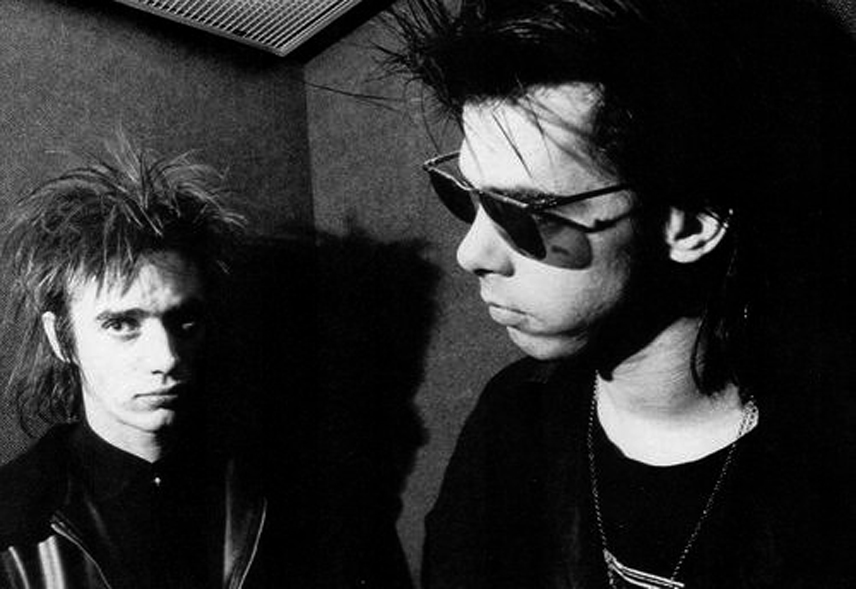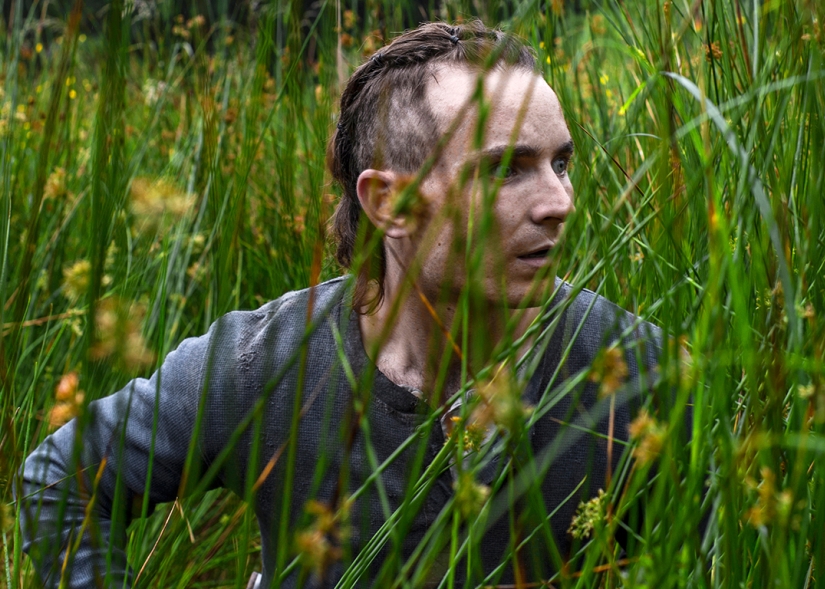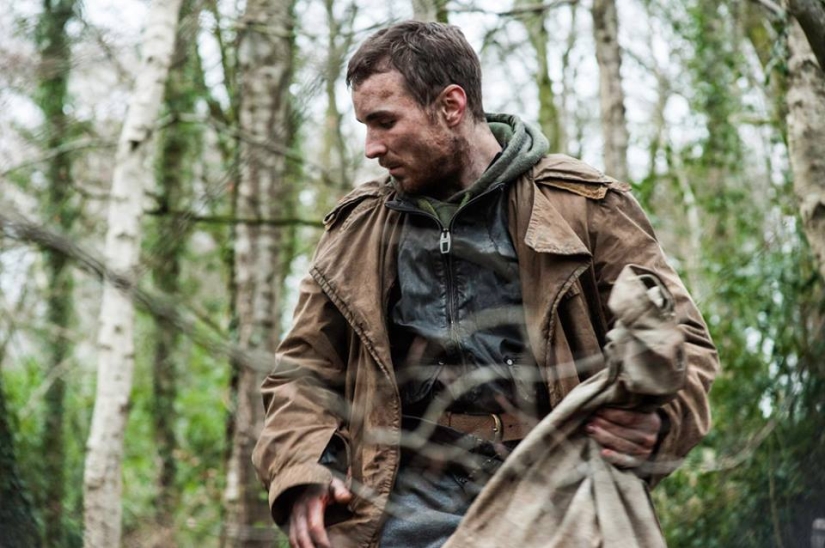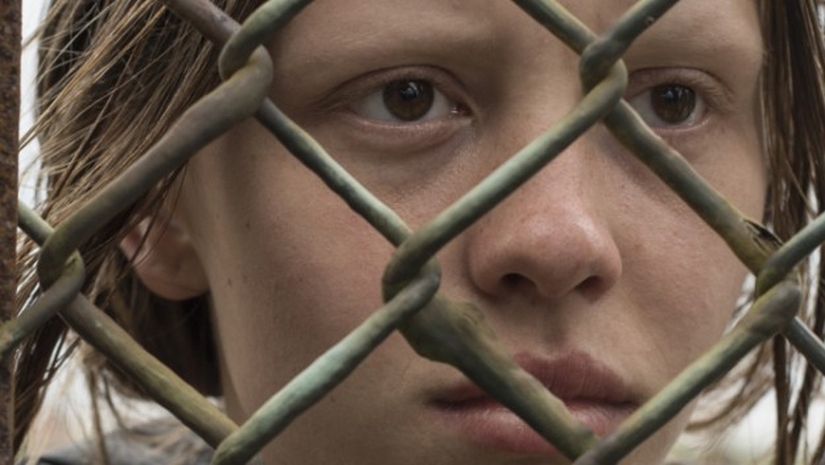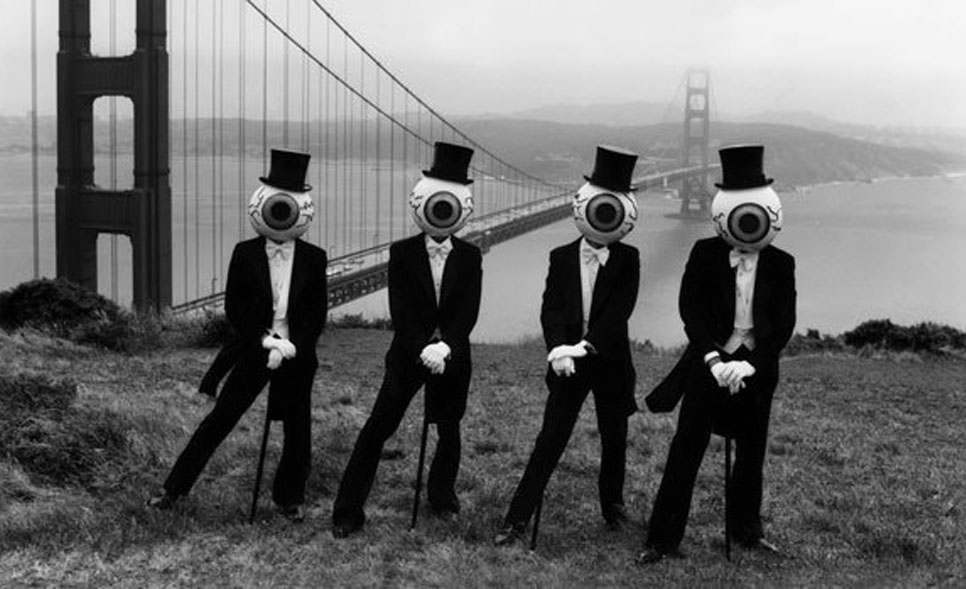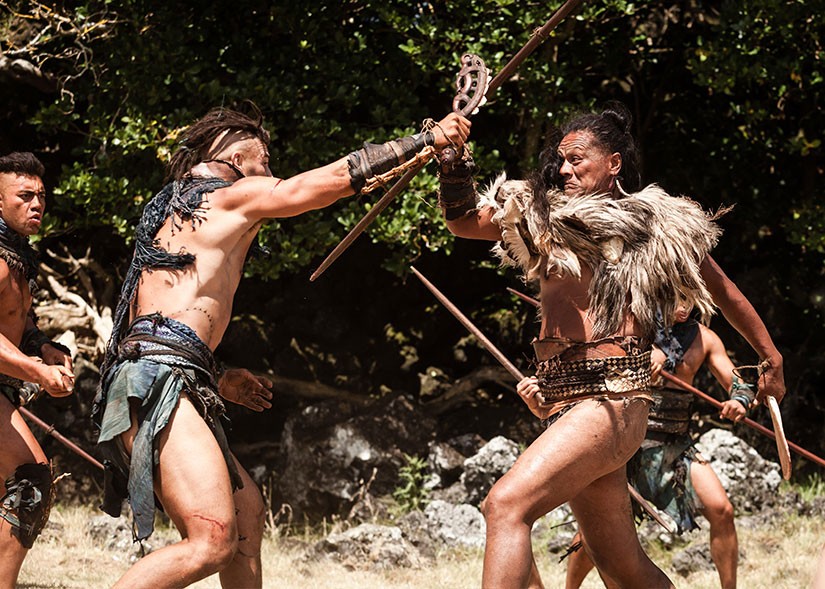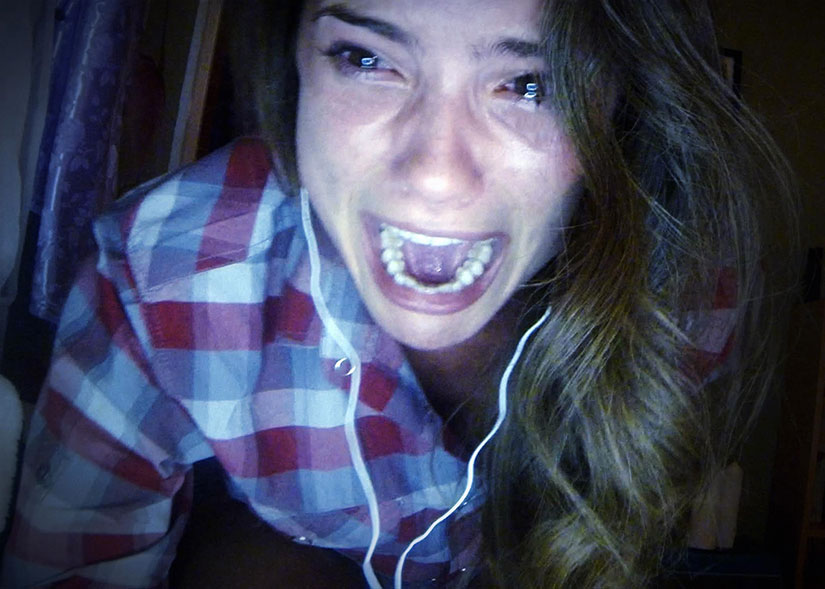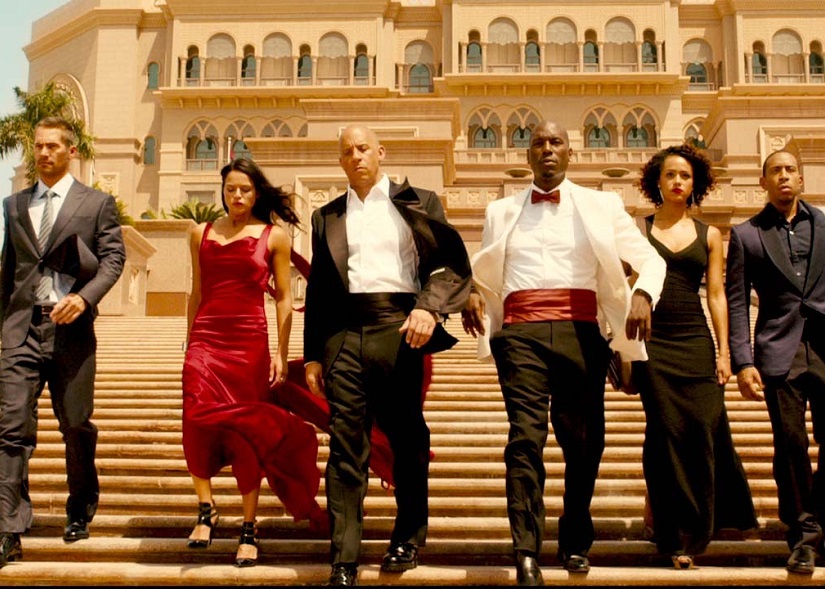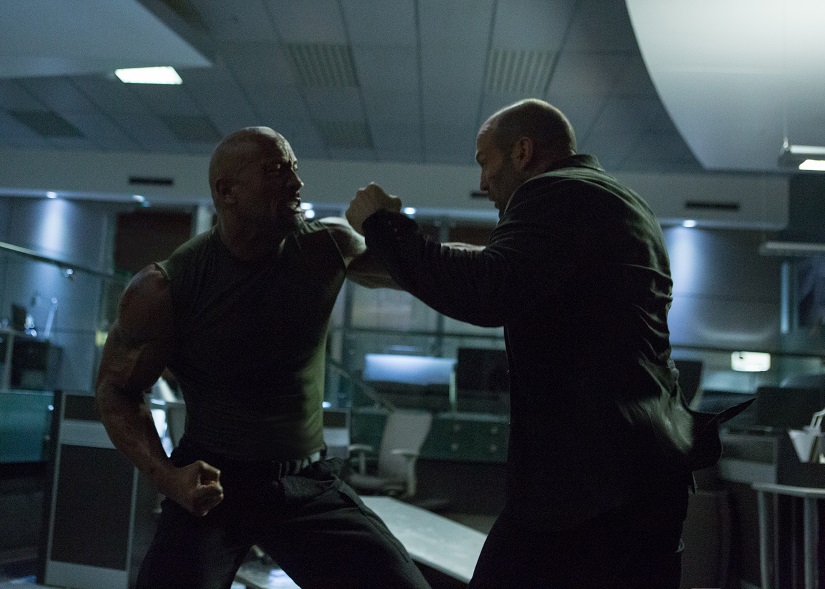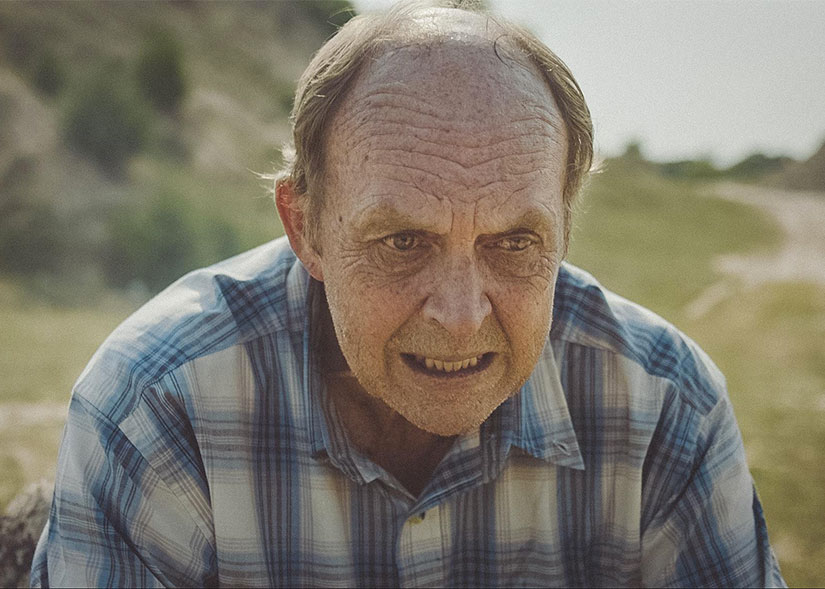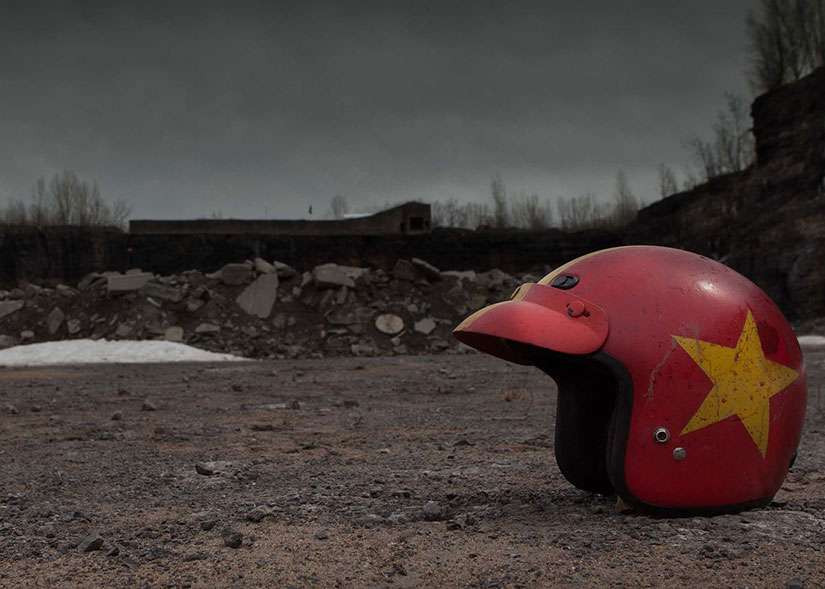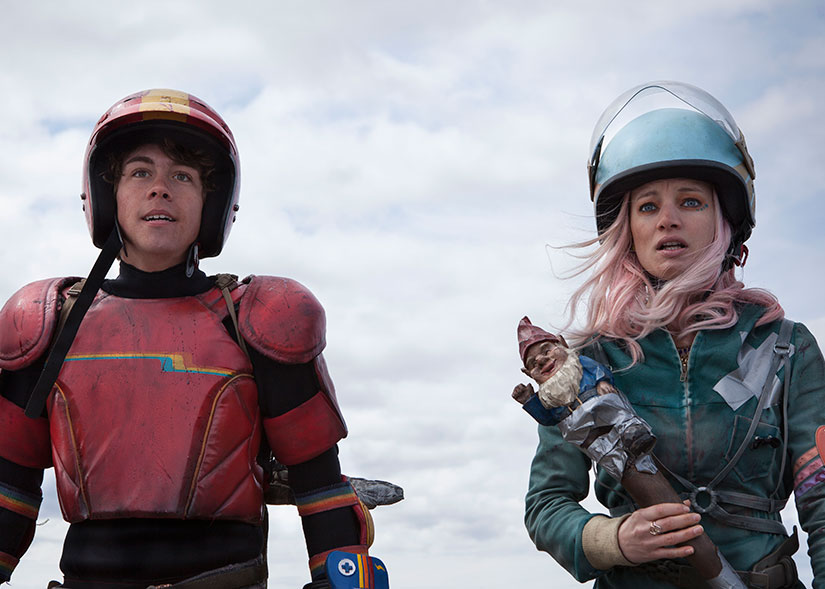[Review] The Road to God Knows Where
The Road to God Knows Where
Director: Uli M. Schüppel
Rating: N/A
Re-Release Date: April 19, 2015 (CIMM Fest)
Nick Cave is truly a man of many talents. He's a critically acclaimed musician, songwriter, screenwriter, novelist and actor. Most recently, he has written the new screenplay for the highly anticipated remake of the hit movie, The Crow, coming to theaters in 2016. With decades of consistent work in Hollywood, Road to God Knows Where stretches back to the beginning of his career at the 1989 American tour with Nick Cave & The Bad Seeds. Having been originally released in 1990, the film is being re-released in theaters and festivals around the country, making a much bigger splash than it ever has before.
[youtube id="DdqHptzBHx4"]
The first thing you should know about Road to God Knows Where is that it's not a concert film, and more about the creative side of the music business as it chronicles The Bad Seeds' North American tour over February and March of 1989. Although the overall pacing is rather slow, filmmaker Uli Schueppel's student film sprinkles in a few live show moments, with long intervals back stage footage, on the tour bus, in hotels, in conflict with promoters, and behind-the-scenes of photo shoots and interviews, providing a realistic approach to what it's like on tour with a rock 'n' roll band.
The film was shot in high contrast black and white, setting the Winter's tone and reminding us of the time period when this was filmed. We often see glimpses of Cave's increased interest to remain low key as a writer and artist, than as a celebrity. By the end of the film, Cave expresses content in ending the tour, as it had flowed just as slow to the viewer as to The Bad Seeds alike.
[Tribeca Review] The Survivalist
In most post-apocalyptic movies, the predominant colors are brown and gray, as if the only things that can exist in this fallen world are dirt, soot, and some muddy combination of the two. In Stephen Fingleton's assured feature film debut, The Survivalist, the post-apocalytic world is green instead, lush and overgrown now that the human population is too low to mess it up. Yet like Werner Herzog said about the anarchy of the jungle, this kind of wildness is cruel, and everywhere it's full of murder and death.
The world of The Survivalist isn't just overgrown, though. It's quiet out there, and in that sinister, a-little-too-quiet way. Our title character (Martin McCann) lives on his own in the wilderness in a sustainable cabin for one. Think Henry David Thoreau's Walden, but with the occasional raiding band of cannibal scavengers.
The Survivalist
Director: Stephen Fingleton
Rating: N/A
Release Date: April 16, 2015 (Tribeca)
The survivalist doesn't say a word as he goes about a series of routines: he buries a body, he chops firewood, he plants vegetables, he makes lantern oil, he jerks off. When a mother and daughter (Olwen Fouere and Mia Goth) arrive asking for food, there's finally some dialogue. They look like a pair of backpackers, but their mere presence is menacing. What the two women are asking for may not match their motives, and the survivalist's intentions may not be so pure either. The way they negotiate suggests that this is how the world works now: all interpersonal interactions are types of transactions (even sex) carried out with quiet suspicion.
The lack of dialogue in The Survivalist is so full of potential meaning and scheming thanks to the grim look of the cast, and Fingleton finds surprising power in his expert control of images and silences. The control is apparent with his clever presentation of a graph that opens the film. A red line courses along a black screen representing the increase of human population since the middle ages. A blue line appears representing oil production, and the two lines rise together, abandoning specific decades and centuries. Eventually the blue line dips from view, and we follow the red line as it changes its orientation on the screen into decline.
That's the history of a post-apocalyptic world told in two phrases, a handful of numbers, two lines, and the illusion of motion.
When one of the characters is in danger, a crane shot moves over a field of tall grass with controlled purpose—like the rise and fall of the infographic line, like the dread of a drawn-out note on violins. The audience sees the danger in the field that our hero can't see, and the audience also knows something about the situation that our hero doesn't realize.
The Survivalist takes advantage of the limitations in a character's knowledge. It enhances a number of tense moments throughout the film, where a brief beam of light in the dark is a herald of doom, or even the way a character selects and holds a garden tool seems like a prelude to murder. Everything and everyone is so on edge because the world is out to get them. The Survivalist is all about the pervasive suspense of the quiet and unseen world, and also the unknown and unspoken aims of other people.
Fingleton's visual panache drives most of the film's mood, though the grounded performances lend subdued desperation to the proceedings. McCann has a feral kill-or-be-killed edge, and Fouere has a fox-like mien that suggest she's always calculating her next move; Goth seems so withdrawn, by contrast, and it's difficult to tell what her character's feeling or if she feels much at all anymore. That's the reality of the world of The Survivalist, though there's something harsher that all the characters have come to accept: even small changes in routine can mean the difference between life and death.
For more information on The Survivalist and to find out about screenings/tickets for the Tribeca Film Festival, click here.
[Review] Theory of Obscurity: a film about The Residents
Theory of Obscurity: a film about The Residents
Director: Don Hardy
Rating: N/A
Release Date: April 19, 2015 (CIMM Fest)
After receiving rave reviews at SXSW this year, Theory of Obscurity: a film about The Residents came highly recommended for it's CIMM Fest (Chicago International Movie and Music Fest) screening. So who are The Residents?, this is the question that the film tries to answer, but the answer doesn't come easy. Stemming from a group of creative misfits from Shreveport, La., drawn to and discovered in the San Francisco Bay Area around 1970, they’re a band, they're filmmakers, artists, pop culture historians, they’re a permanent exhibit at MOMA, and they have managed to stay completely anonymous until now.
[youtube id="Ov5EqmOeuPY"]
Unknown to many, Theory of Obscurity does a good job digging deep into The Residents' story as director Don Hardy managed to interview many well known industry folks as testament to their history and lasting influence. There are also former collaborators (musicians and artists), most famously including Penn Jilette, sharing their personal experiences with The Residents. Interviews also include long time band affiliates, including Primus, Devo, Ween, Simpson's creator Matt Groening, and countless fans, explaining how and why this group came to be so influential to them.
Another huge part of the film is on the The Cryptic Corporation, The Residents’ management company, formed in the early 70's to oversee and manage all of their work. Founders of the Cryptic Corporation speak quite a bit about the band’s business and their own involvement. Altogether, the film is about art. It's is a quirky and often comedic form of story telling on how a collective group of people remained anonymous for 40 years, and how they came to be part pop culture history, still touring the world today.
[Review] The Dead Lands
The Dead Lands
Director: Toa Fraser
Rating: R
Release Date: April 17, 2015 (VOD and limited release)
Hongi (James Rolleston) is the lone survivor of an attack by another tribe that led to the death of his Chieftan father and the rest of his tribe. With the rival killer, Wirepa (Te Kohe Tuhaka), still traversing the lands, Hongi heads to The Dead Lands in search of a mysterious being known for his fighting prowess. When Hongi meets the Warrior (Lawrence Makoare), their unusual relationship builds towards a camaraderie in which Hongi is able to channel his inner strength. However, Wirepa and his tribe are ruthless, posing a serious threat to the outnumbered Hongi and Warrior in a time when ruthless savagery goes a long way.
[youtube id="6n9WK1BtvFo"]
The Dead Lands' biggest selling point is its setting in pre-Colonial New Zealand, as well as its focus on the Maori, a group of indigenous New Zealanders. The film offers a rare glimpse at different aspects of Maori culture, like their religion, language, traditions, and especially their martial arts. While the fight scenes are exciting, they're few and far apart with a story that's rife with cliches and stereotypes about revenge, adulthood, father/son dynamics, lone wolves, enigmatic entities... the list goes on and on.
The Dead Lands would have benefited by either focusing on the action elements or the dramatic/spiritual elements. I understand some type of narrative or backstory was important to link the fight scenes together, but as we've seen in recent years, an action film can be light on story and still be entertaining and successful in spite of a weak narrative (re: The Raid: Redemption). The decision to include more backstory could be due to wanting to highlight and illustrate a culture that hasn't been in the spotlight, but the film feels too unfocused because of it.
[Review] Unfriended
Unfriended
Director: Leo Gabriadze
Rating: N/A
Release Date: March 13, 2015 (SXSW)
Billed as ushering in "a new era of horror," Unfriended had quite the tagline to live up to leading up to its SXSW premiere. As technology and horror continue to grow alongside one another, many young filmmakers are utilizing creative ways to incorporate what's become everyday life into the genre that loves to twist and subvert it. Something that has been toyed around with in recent years is utilizing multiple "screens" to tell the story. For example, Nacho Vigalondo's Open Windows told the entire film through screens a la security cameras, laptops, cell phones, etc.
Similar to the aforementioned film comes Unfriended, but raises the stakes (and technical difficulty) of telling a gripping, compelling horror film completely through a teenage girl's laptop. Does Unfriended ultimately succeed in its attempt of truly ushering in this new era of horror, or does it become yet another failed attempt to modernize horror films?
[youtube id="Zha4RNos8vo"]
On the anniversary of their high school classmate Laura Barns' (Heather Sossaman) death, Blaire (Shelley Hennig), Mitch (Moses Jacob Storm), Jess (Renee Olstead), Adam (Will Peltz), Ken (Jacob Wysocki) and Val (Courtney Halverson) are having a normal night, video Skyping one another. However, a mysterious, unseen stranger named "billie227" claims to be Laura and is seeking revenge for a humiliating video that led to her suicide. To accomplish this, "billie227" pits the friends against one another as their deepest secrets are revealed, threatening to not only ruin friendships, but could lead to untimely deaths.
The film can be a bit jarring to watch as everything plays out through Blaire's laptop, immersing the audience and having them become a part of the film as another unseen voyeur watching high schoolers fight amongst one another. At the same time, it's very reflective of our modern society where technology has replaced such intimate meetings just a generation earlier would have by physically meeting one another. While I'm only in my late 20s, I never experienced group Skype calls with people outside of conference calls for work, so the immersion of contemporary high schoolers' interactions and essentially becoming "one of them" adds an extra layer of tension once the horror truly begins.
It's easy for experimental genre films to be forgotten once the festival circuit has ended, but Unfriended is definitely not one that will be forgotten easily. With NBC Universal's backing, the film is destined to have some minor success at the box office, and will find a devoted audience. It may not reach Paranormal Activity levels, but I can see Unfriended serving as a stepping stone to both cast and crew alike.
Furious 7
"Though this be madness, yet there is method in't." - Polonius, Hamlet, Scene 2 Act 2
The seventh entry in the meat 'n' metal saga that is Fast & Furious ups the silliness, downs the dialogue, and produces what is sure to be one of the most ridiculously entertaining movies of the year. Mad Max is going to have a hell of a time crossing the line as 2015's best car movie after this.
This time around, Dominic Toretto (Vin Diesel) and his crew are threatened by the vengeful brother of the villain from the previous movie and need to find a Macguffiny piece of tracking technology allowing them to get the drop on him before he kills again. That's it. The entire plot. The Fast & Furious movies have always been exceptional on the road, but tend to stall once the dialogue kicks in. Furious 7 keeps the pontificating to a minimum, piling on gargantuan set-pieces and escalating the Tom & Jerry lunacy, saving speeches about family for brief intermissions where the audience can catch their breath before starting all over again. It's madness, but there's method in it, and by golly, does it ever result in a thrilling ride.
[youtube id="Skpu5HaVkOc"]
Furious 7
Director: James Wan
Rating: R
Release Date: April 3, 2015
Furious 7 sets out its tone from the very first scene, in which Deckard Shaw (Jason Statham) visits his comatose brother in hospital and leaves the place in a somewhat messier state than he found it. It's joyfully silly and shows a total disregard for logic, captured in a bravura tracking shot by new director, James Wan, who proves a highly capable replacement for the outgoing Justin Lin. Give a moment's thought to the movie and it falls apart in front of your eyes, yet there isn't a single second in which everyone involved isn't fully aware and steering into the idea, pounding viewers' scepticism until they've no choice but to chill out and enjoy the ride. Even a piece of product placement brazen enough to make James Bond would baulk becomes funny by merit of how completely and knowingly shameless it is.
Once you accept its terms, it's hard not to fall in love with its entertainment-before-logic approach. Cars fly between Abu Dhabi skyscrapers, take parachute jumps out of aeroplanes, go on off-road jaunts through forests down the side of an Azeri mountain, and much more besides. Statham shows up at virtually every encounter with no explanation of how or why, other than it being a lot more fun to have him there. Those lunkspolitation match-up battles the Expendables movies promised and failed to deliver? Here, you get Statham vs The Rock, Michelle Rodriguez vs Ronda Rousey, Paul Walker vs Tony Jaa (twice), Statham vs Vin Diesel, and The Rock vs, umm, a predator drone. Wan's shakycam and rapidfire editing can be frustrating, but maintains enough coherence not to lose the geography or physical impact of the fights.
By this point, the main cast have been together long enough to share a chemistry which feels like a genuine friendship, adding sincerity to Toretto's proclamations of his crew as family. He's the same gravel-voiced, straight-faced man-sausage as always, but allows just enough self-effacing irony and warmth to peek through the facade to ably function as the centre of the Furious universe. Tyrese Gibson and Ludacris make some wonderfully silly comic relief double-act, while the disgracefully gorgeous Nathalie Emmanuel - given an Ursula Andress moment in a tiny bikini, because why not - adds snarky Brit girl charm to what is otherwise an stew boiling over with macho posturing - even, or perhaps especially, from Michelle Rodriguez.
The downside is that with such an expansive cast, several of them have to be sidelined, which means Jordana Brewster is left fretting at home, while Sung Kang's Han is offed with barely a thought. Most tragic is the restriction of The Rock/Dwayne Johnson's Detective Hobbs to little more than cameos at the very beginning and very end of the movie, especially since, as you'd expect, his barnstorming charisma and comic timing steal every one of the scenes in which he appears. Hobb's heavily implied infatuation with Diesel's Toretto continues apace, and were it not for the presence of his young daughter in an early hospital scene, you get the feeling the two would be getting down to some earth-shattering, jello-abusing, sweaty bro-love right then and there.
Of course, it's impossible not to discuss the impact of Paul Walker's tragic real-life death on the movie. I've never been especially complimentary towards Walker's abilities as an actor in the past, having previously referred to his on-screen presence as an unusually attractive piece of cardboard, but he's settled into the role comfortably enough to deliver an easy-going and likeable performance even in the few moments he's not in a punch-up or looking stern from behind a steering wheel. His character remains the least lively of the main cast, but the subplot about needing to get Brian home to his real family is made more affecting by Walker's passing, even if his scenes with Brewster are undercut by some dreadful, sub-telenovela standard scoring. Fortunately, it all comes together in the movie's final scene, which functions as a heartful and moving farewell to the character and tribute to the actor, symbolised with surprising grace and delicacy in the closing shot. You wouldn't expect a Fast & Furious movie to reduce people to tears, yet no fewer than three women around me were visibly weeping when the lights came up.
That poignancy adds just a little depth to a movie whose otherwise sole focus is loud, smashy entertainment, and I'm sure the eternally blockbuster-friendly Walker wouldn't have wanted it any other way. Furious 7 is not without its flaws, coming in about ten minutes too long and with even the most astonishing action sequences a little too prolonged not to feel a little wearying by the end. Yet those sequences truly are astonishing, each sufficiently distinct in look and theme to avoid repetition and packed with ribald humour and jaw-droppingly insane stuntwork.
Those with a predisposition towards political correctness should turn their noses away now: Rodriguez's Lettie is given as much depth as any other character, but the male gaze is at full strength here, albeit never quite sure whether the cars or the booty are more worthy of worship. You can almost hear Vin Diesel and Paul Walker's trousers rending in a scene where they happen upon a rare supercar, and when Diesel lifts it up for Walker to take a more intimate look at its engine, you get the feeling this is the threesome the two of them have really been waiting for. Diesel's two hands probably weren't all that was holding the car up, if you know what I'm saying. It's hard to get righteous when the movie's so completely aware of its own absurdity, however, and while perhaps slightly more explicit, the T&A never feels quite as predatory or trashy as Michael Bay at his leering worst. Fast & Furious 7's sole aim is delivering a hyper-concentrated dose of blockbuster entertainment, at which it succeeds magnificently.
Uncle John
Uncle John
Director: Steven Piet
Rating: N/A
Release Date: March 16, 2015 (SXSW)
Anxiety and tension can be a film's greatest assets when used appropriately. Sure, horror films may rely on supernatural entities, quick scares, and gore to frighten audiences, but nothing is more harrowing than watching the slow build of something sinister you're not quite sure of, and the anxiety over waiting for it to reach a head. The best psychological thrillers can take the slow build and create an unease that we can all relate to, given the genre's tendency to stay grounded in its narrative and characters. At the same time, we don't always find ourselves in scenarios where a mysterious disappearance affects us directly. Rather, we find our tension and anxiety within our interactions with everyday people, especially in regards to romantic pursuits.
Uncle John takes the elements of harboring a secret in a small town and the tension caused by a budding romance between a manager and her employee to create a hybrid psychological thriller/indie romance that, despite my inadequate summary of the film's tone, works extremely soundly and shows that combining two vastly differing genres into one film can be done successfully.
[youtube id="N9h7y-kPGs0"]
A small-tight knight community in a small Illinois town is stunned when a man known for his rambunctious past goes missing following a round of personal apologies as a means of atonement. Unbeknownst to everybody but the missing man's brother, Danny (Ronnie Gene Blevins), the anonymous and unthreatening John (John Ashton) has everything to do with the disappearance, but his calm, friendly demeanor hides his dark secrets. Meanwhile, a graphic designer in Chicago named Ben (Alex Moffat) finds himself facing his own tension when a new project manager, Kate (Jenna Lyng), is assigned to work with him. While their interactions are cordial, they soon begin to grow closer to one another, despite the social scrutiny of workplace relationships. Each narrative converges into one when Ben pays John a visit as both men must overcome their respective tension to deal with the secrets they hide.
As I mentioned in the introduction, I'm doing a terrible job at summarizing the film, because while the overall sweeping dual narratives are enough to entice curious viewers, the true strength of the film is found in the nuances of the direction, tone, and performances. It's hard to simply capture those feelings into words without spoiling the film, especially in one like Uncle John where the payoff is not only satisfying, it leads viewers down a path of character analysis in which they try to decipher each characters' true natures and intentions.
Honestly, I can try as hard as I can to best praise Uncle John, but it truly is one of those remarkable films where you'll enjoy it more going into it blind. Uncle John is perfect for cinephiles that love to dissect and analyze every aspect of a film, but also has enough appeal to attract casual viewers. One thing is clear: Uncle John is the type of film you'll enjoy debating and discussing with other film fanatics after multiple viewings. Isn't that what the medium is all about?
Turbo Kid
Turbo Kid
Directors: Anouk Whissell, François Simard, Yoann-Karl Whissell (RKSS)
Rating: N/A
Release Date: March 17, 2015 (SXSW)
Nostalgia is a lovely thing, especially when it comes to art. It adds that little extra something that allows us to connect to, love, and appreciate it just a bit more. When done improperly, however, nostalgia can handicap and hold back works of art that aren't strong enough to stand on their own. Turbo Kid relies on the nostalgia of various '80s films and genres, but treats the time period with reverence while not allowing its attention to certain stylistic choices to negatively affect the overall film.
Turbo Kid, then, fits very well in the modern landscape of indie films where equal focus is given to both production value/quality and dedication to a style/tone that all but guarantee it will become your next favorite cult film. Even if you're unfamiliar with or not a fan of '80s films, Turbo Kid has enough energy and infectious charm to assure you'll fall in love with it.
[youtube id="nh23-rQUi5U"]
In a dystopian alternate 1997, the world has been ravaged by some type of apocalypse, leaving behind a barren wasteland where everything goes. The Kid (Munro Chambers) is an orphan traversing across the wasteland for comic books and '80s trinkets to collect and trade for water (which is a rare commodity in the world). During one of his treks, he meets Apple (Laurence Leboeuf), an enigmatic girl who quickly deems The Kid her new best friend by attaching a tracking device on him. While he's initially annoyed by her presence, the Kid eventually becomes attached to her, especially after they're attacked by a biker gang run by the vicious Zeus (Michael Ironside), who himself pits captives against one another in deathmatches where the loser has their blood cleansed and purified for water.
While the Kid is able to escape, Apple finds herself captured by Zeus' henchmen. During the escape, the Kid comes across a ship implied to be the hero of his comic book's, complete with a power suit that gives him powers. Teaming up with Frederic (Aaron Jeffery), a vigilante known for his arm-wrestling prowess, they're able to rescue Apple from Zeus' clutches. However, by doing so, they draw the ire of Zeus' full attention.
While Turbo Kid is set in 1997, the film's presentation makes it seem as if it was shot during the '80s, complete with a time-appropriate score and sound effects, bright-colored costume palettes to contrast against the drab and gray of the wasteland, and a charm that befits '80s films. The film draws from various post-apocalyptic '80s films like BMX Bandits and The Road Warrior in terms of scope and style, especially with the practical visual effects and level of gore that befits the campiest of '80s films; however, it also possesses the innocent charm and hopeful optimism that helped define '80s teenage protagonists.
Beyond the '80s-inspired aesthetic, Turbo Kid is just an amazingly fun film. It's fun to see the Kid express his awkwardness over getting attention from a pretty girl, just for somebody to get their head decapitated completely with a copious amount of blood gushing out just a few minutes later. Again, while I do believe there's something in Turbo Kid for everyone, there will be those who just don't enjoy primal fun qualities like practical blood effects, synth-heavy scores, and a loose plot that is both serious in delivery, but doesn't take itself seriously at the same time.
Give Turbo Kid a chance, and I can guarantee it'll become the film you try to rally all of your friends to watch.

